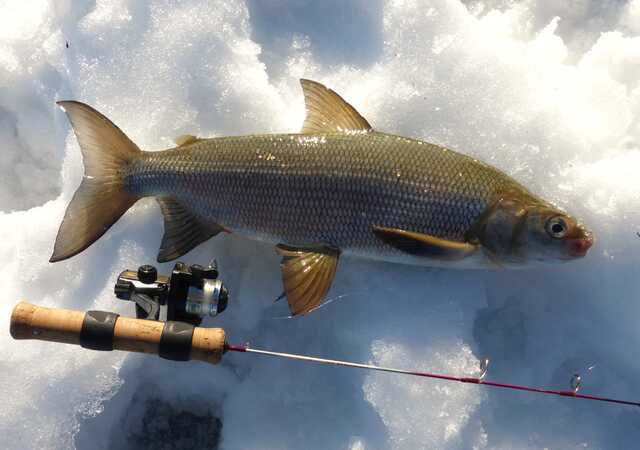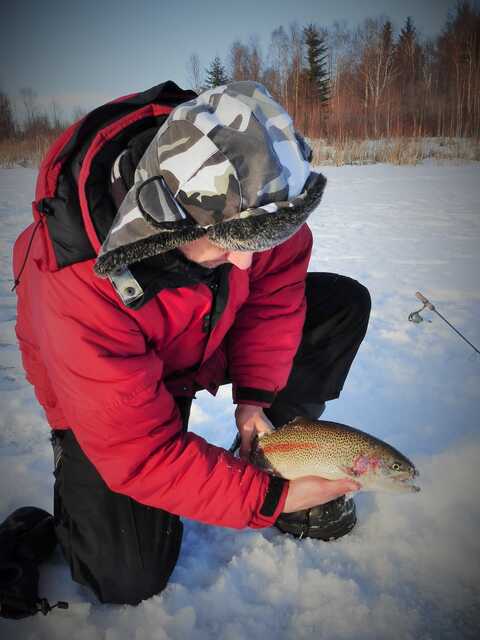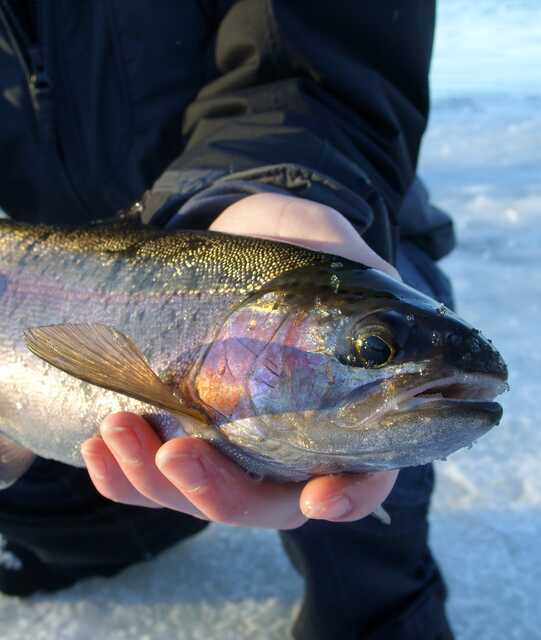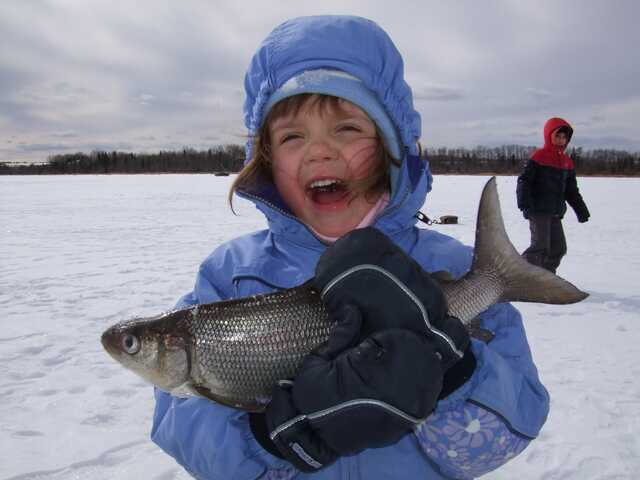It is one of the least utilized, but also one of the more effective hard water presentations, especially for trout. I often think about how many fish I have caught on flies throughout the summer, and it's a lot, so by this logic, flies should still be effective when the water turns cold and the surface of a lake turns to ice. And the logic is sound. For many winters now, I have caught loads of fish using flies through the ice.


The most consistent performer is using smaller bead head nymphs, like the bead head prince nymph, the bead head pheasant tail, the bead head shrimp, and the bead head zug (where you can find them). Slowly, very slowly jigged, and sometimes just allowed to sit still, trout will happily come over and slurp them up. For presentation though, I pull the knot tied to the hook over towards the point of the hook and this little adjustment allows the fly to hang horizontally, and that, I believe, catches me more fish.


While flies and trout go together like bread and butter, I also catch my fair share of whitefish and perch with flies. Because bites are light, I will often fish by sight, choosing to fish as far down as I can see the hook and how the fish respond to it. This is where fishing a bead head fly comes in handy. The little gold bead is quite visible and makes it much easier to track my fly a little deeper.


I have an experiment in mind for the coming season, and that's to fish flies deep with the aid of a sounder and underwater camera. I think if I can track, watch, and react to fish cruising in to investigate my fly in deeper water, I will open up an entirely untapped fishery, especially for deep water whites. I can't wait to see how this turns out.



